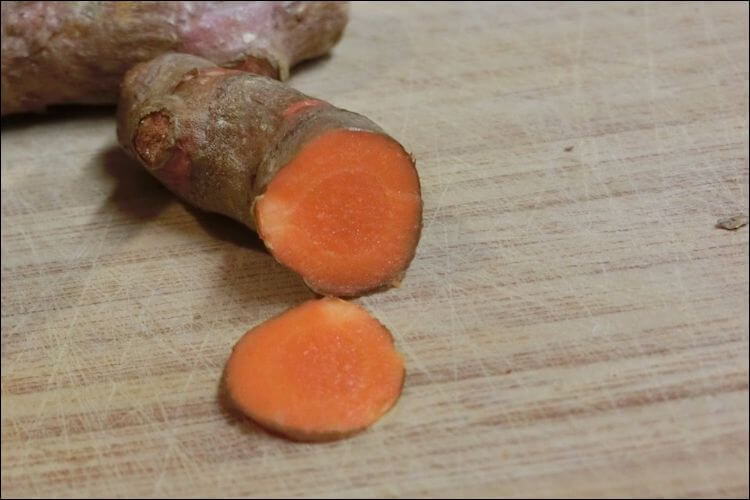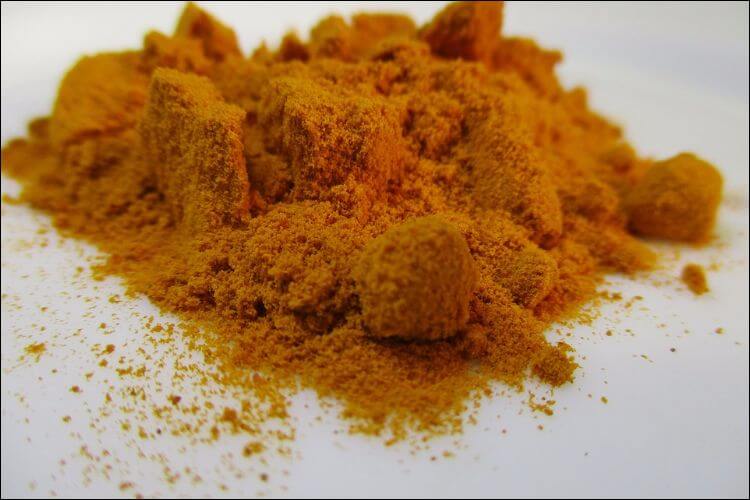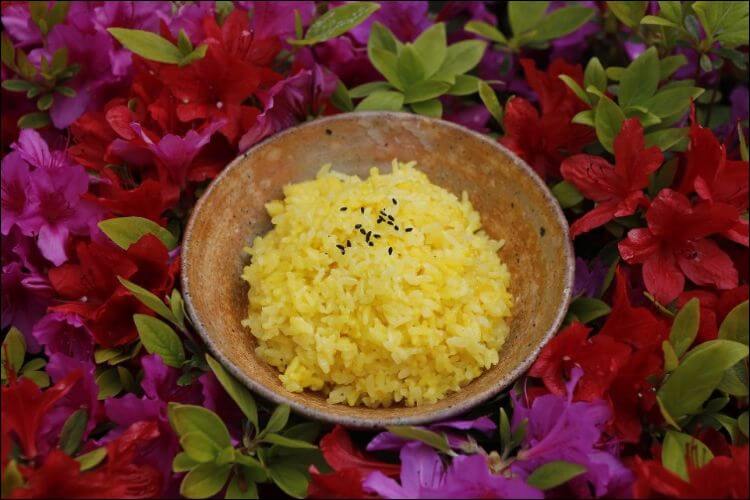Scientifically called Curcuma, turmeric is one of the superfoods that has become very popular in the recent years. Though it has been long used in Chinese medicine and other Eastern cultures, it has only recently begun to be appreciated in the West as well. Its popularity grew thanks to the fact that it has plenty of therapeutic applications, as well as antibacterial and antiseptic properties. Today we are going to have a look at how to grow turmeric and take care of it properly.

Before Planting
1. Preparing the Soil
Turmeric generally thrives in a slightly acidic or a slightly alkaline soil. Make sure you use a soil tester before planting anything. The soil should be light and loamy. Ideally, it should be rich in organic matters, so if you notice it’s not, correct this situation. Moreover, check if the soil is well-drained. You can see if the soil drains well by testing it. Pour some water in it and come back every 10 minutes to see if it’s draining properly. If it doesn’t and you plant turmeric like that, the plant will risk rotting.
An alternative is to mix compost, tap water, and potting soil. Place it over a bottom layer where you put sand, fertilizer, and crushed limestone. Make sure the fertilizer has a pH between 6.0 and 7.8.
2. Ensuring the Right Temperature
When you decide on how to grow turmeric, you should know that the temperature must be between 20 – 35 °C (68 – 95 °F). For this reason, it’s important to choose whether you want to plant it outdoors or in containers. You can either choose to plant it in your backyard, but you need to bring it inside in the winter if you live in a colder area, or in a container where you can ensure all the right conditions. Remember that if the temperature drops below 10 °C (50 °F), the plant will be harmed.

3. Finding a Good Location
Whether it’s planted into the ground or in a pot, turmeric needs to be protected from the wind. In the tropics, where it originally grows, turmeric loves the dappled shade. Meanwhile, it avoids the intense and direct sun. For this reason, an important part of knowing how to grow turmeric correctly is to assess the right amount of sunlight. If you live in a temperate area, offer it full sun for a proper growth. However, if you’re worried about this, provide it with some shade in the afternoon.
4. Choosing the Right Pot
Learning how to grow turmeric in a pot is not very different from knowing how to grow it in the backyard. It’s recommended you choose a large pot since this herb can grow to more than 1 m in height. As such, go for a pot that has 12 inches in depth and 12-18 inches in width. In such a pot, the turmeric can spread the tubers as it wants. One of these containers can hold 1-2 rhizomes.

Planting Turmeric
5. The Timing
The best time for planting turmeric is in the spring or summer. The temperatures should rise above 12 °C (54 °F). However, if you live in the tropics, you can plant it all throughout the year.
6. How to Plant It
If you know how to grow ginger, then you surely know how to grow turmeric as well. You can get a turmeric rhizome either by buying it from your local nursery or by taking it from someone who already grows their own plant. Then, follow these steps:
- Break the rhizome into various small pieces. Each piece should contain a minimum of 2-3 buds.
- Take an adequate pot and fill it up with the rich organic soil. Make sure it’s moist and it drains well before planting the turmeric.
- Place it around 2 inches below the surface of the soil. Check if the buds are facing up.
- Finally, water the pot abundantly.
Here is a short clip that illustrates how to grow turmeric:
Caring for Turmeric per Season
7. Watering It
Turmeric requires water the same way ginger does. From spring to fall, which is the growing season, you should keep the soil moist. Use a spray bottle to keep the humidity up if you grow the plant indoors. If you’re growing outdoors, mist the foliage when the weather gets dry. In case you live in a warmer region, you should continue watering the plant during winter too. In this way, you will maintain the soil moist, which is very important. It’s essential not to make the soil too moist since turmeric doesn’t like having wet feet. If this happens, they will start to rot. In general, it’s recommended to water it every 2 days.
8. Taking Care of Turmeric in the Winter
Winter can prove to be quite a challenge for this popular superfood. If you grow it in a pot, you should move the plant inside, even if there are low-light conditions. Remember that you need to overwinter only the roots. When growing indoors, the ambient temperature should be 18 °C (64 °F).
If you planted turmeric on the ground (in a tropical climate), then you don’t need to worry about winter. However, if you live in a temperate area (USDA zones 9b to 7), you should take some special steps for this. When fall ends, cut down on watering. When you notice the leaves start turning yellow and wilting because of the low temperatures, cut it back to the ground. In this way, it will start hibernating. When spring comes, it will rise up again.
In case you live in a colder area (below USDA zone 7), you should dig up the turmeric rhizomes and save them from freezing. When digging up, rinse off any excess soil and take off the pieces that are rotting, if any. Let them air dry and keep them in a cool, dry place until spring comes again.

9. Fertilizing
Every month, you should fertilize your turmeric plant. For this, use an all-purpose liquid fertilizer. Apply it during the growing season. Alternatively, you can also use manure or compost.
10. Pruning
An important thing to know when learning how to grow turmeric is that you shouldn’t prune it. It’s enough to occasionally remove the leaves that dried.
Pests and Possible Diseases
11. Preventing and Healing Turmeric
Luckily, turmeric does not risk any serious disease, nor does it have any major pests. Despite this, there are some things you should be aware of if you’re interested in learning how to plant turmeric. Red spider mites, as well as scales, can appear on your plant. When it comes to diseases, some of the most common are leaf spot and rhizome rot. Usually, the plant will rot if it’s kept in a waterlogged soil. Yet again, we must underline the importance of draining the soil properly.

Harvesting Turmeric
12. How to Harvest Turmeric
It takes 8-10 months for a turmeric plant to reach maturity. Usually, the harvesting is done after the leaves turn yellow and the stems begin to dry out. Luckily, it’s not hard to harvest this plant. You simply need to take the plant out of the soil entirely. Cut the part you need from the roots and then replant it to make sure there’s a new plant growing. It’s best to harvest it all at once. If you want to grow turmeric again in the same soil, you should change the soil. Most likely, the original plant has used up all the nutrients there.
13. Processing the Turmeric
However, the harvesting process doesn’t stop there. Here you have the steps you need to follow to process the turmeric rhizome:
- Boil the rhizomes you get for around 45 minutes.
- Take the skin off them.
- Place them bare in a tray.
- Expose them to sunlight and let them dry slowly.
- After they are dried, grind them.
- Store the fresh turmeric powder in your kitchen and place it in an airtight container.
Remember to wear gloves whenever working with turmeric, especially in large quantities. The pigment in it is very strong, so your hands will get bright yellow.

Can the same methods be used to grow turmeric and parsley?
Yes, growing parsley tips and techniques can be used to care for both turmeric and parsley. Both plants require well-drained soil, regular watering, and partial sunlight. However, turmeric prefers warmer temperatures, while parsley thrives in cooler conditions. Overall, the same methods can be applied with a few adjustments.
Uses and Benefits
14. Using Turmeric
The entire turmeric plant can be used for various purposes. Besides having plenty of medicinal properties, people want to know how to grow turmeric for its delicious taste as well. It probably contains the most powerful anti-oxidant and anti-inflammatory properties. Often, it’s used as an anti-depressant and it helps to fight Alzheimer’s disease. Moreover, it battles different kinds of cancers.
Usually, people prefer to use turmeric powder since it’s easier to use. You can find it in all kinds of curry recipes. Adding just a pinch of turmeric is enough to offer the food an interesting orange color. The Thai cuisine, for example, uses flowers and young shoots, while the Indonesian one relies on the leaves for flavoring fish dishes. If you decide to use it in your diet, you should also add some pepper. Black pepper enables turmeric’s properties and multiplies them.
Conclusion
Many people decide to look up how to grow turmeric on their own because this spice can be quite expensive in some areas. Moreover, it’s an easy process that ensures you have enough turmeric for your entire family. Add them to various foods for a health boost or a great taste.
Image source: 1








